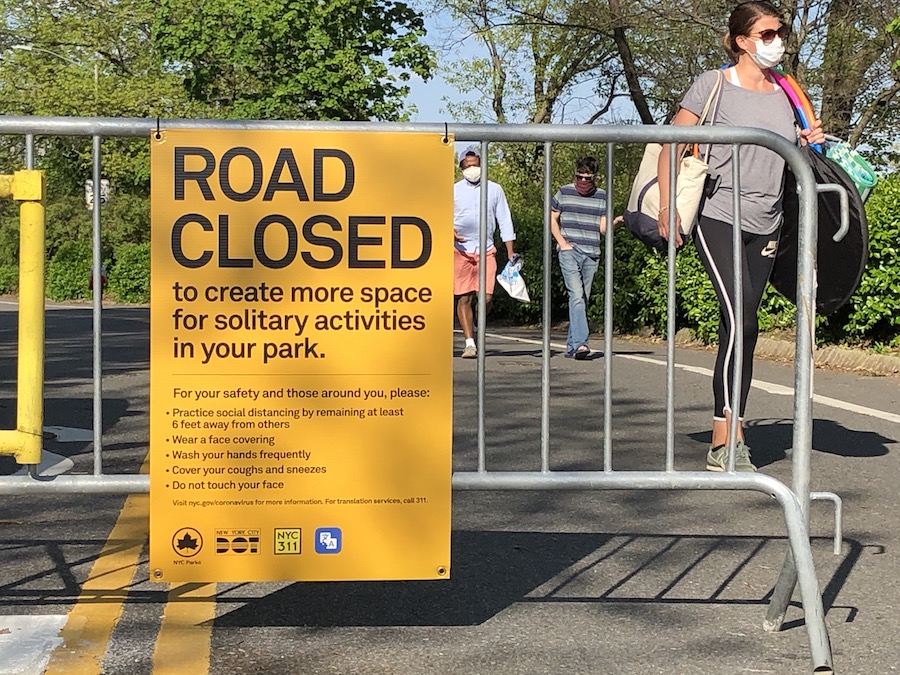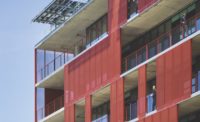As the pandemic emergency drags on, inhabitants of dense urban environments are challenged to effectively maintain physical distancing. Sidewalks are narrow and often obstructed, and much public space has been engineered around parking and the flow of vehicular traffic. “COVID has revealed how little space we give to people in our cities and how much space we give to cars,” says Brent Toderian, a Vancouver-based city planner.
Now, as stay-at-home orders have resulted in largely empty streets, some local governments are temporarily converting roadways into pedestrian zones where people have space to safely accomplish essential trips on foot, to exercise, or to simply enjoy fresh air. Several U.S. cities—including Denver, Minneapolis, San Francisco, and Boston—have implemented programs that restrict vehicle access on select streets, prioritizing cyclists, joggers, and pedestrians. Oakland, California, has an especially ambitious initiative, with a phased plan for designating 74 miles, or 10 percent of its roadways, as “Slow Streets.”

America’s most populous metropolis, New York, is also implementing an “Open Streets” program that officials say will eventually encompass 100 miles, or about 2 percent of the city’s total street area. The first seven miles of the program, opened in early May, were primarily in and around public parks—a strategy that some observers criticized. “They should be in neighborhoods that are open-space deserts,” says New York–based transportation economist Charles Komanoff. But right before the start of Memorial Day weekend, the city announced its third group of Open Streets, bringing the total to more than 44 miles across the five boroughs, with a smaller portion directly adjacent to or through parks. The designated roadways include nine miles of temporary protected bike corridors intended to connect existing bike lanes.
Urbanists have advice for New York and other cities aiming to provide residents with more breathing room. Toderian has a “Top 10” list of recommendations that include making such spaces plentiful and “hyperlocal,” so the greatest number of people can have access; making them “ordinary” and “non-sexy,” rather than a “destination or a scene,” in order to avoid crowds; and to network streets into systems that serve both essential workers and local residents.

What New York’s Open Streets program might look like as it expands, or how much of it will persist post-COVID, is unclear. “We want to see which aspects are applicable moving forward,” says Eric Beaton, a deputy commissioner with the Department of Transportation. Activists suggest the initiative could help the city recover once restrictions are eased, providing people with transportation options other than cars—and their associated problems of congestion, carbon emissions, and poor air quality—especially as public confidence in mass transit has taken a devastating hit. Danny Harris, executive director of Transportation Alternatives, a New York–based advocacy group, points to cities around the globe as examples of what could be. Paris, for instance, is fast-tracking pre-pandemic plans for reducing on-street parking, widening sidewalks, and creating an extensive network of bike lanes, while Milan will revamp streets at the city’s core for cyclists and pedestrians. And in Vilnius, Lithuania, streets are being closed to cars, allowing restaurants to create open-air dining areas that meet physical-distancing requirements.
Framed as part of a long-term vision for public space and transportation policy, rather than just a pandemic accommodation, the Open Streets plan could help ensure the future livability of New York—even, suggests Harris, helping to address environmental sustainability, fight economic inequality, and improve public health. “If we don’t reimagine our city now for the next century,” he says, “it would be a missed opportunity.”






Post a comment to this article
Report Abusive Comment